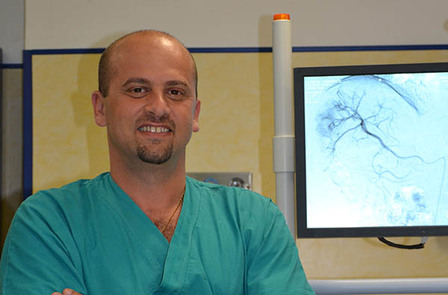
By Mario Corona
Interventional radiologists can play an important role in managing complications because surgical re-intervention is always linked with a higher risk of complications. Also, in procedures that involve the placement of endoluminal sleeves or gastric balloons, interventional radiologists have the necessary skills and training not just to manage complications after bariatric surgery, but to offer the primary treatment themselves.
Obesity has become a leading socioeconomic problem that affects more than 400 million people worldwide and results in increased morbidity and mortality.
Conservative treatment has not been proved to achieve long-term weight reduction and there is extensive evidence that bariatric surgery is effective in reducing weight, obesity associated comorbidities, and mortality.
In this scenario, approximately 350,000 bariatric surgeries are performed worldwide annually. Of these, 63% were carried out in the USA and Canada. Under the broad category of “bariatric surgery,” we can list several procedures that all have the aim of reducing the weight of the patient by gastric restriction (adjustable gastric bending, sleeve gastrectomy), reduced absorption of food (biliopancreatic diversion) or both (standard Roux-en-Y gastric bypass). While bariatric surgery is said to be a safe procedure with procedures such as laparoscopic cholecystectomy associated with a mortality rate of 0.3%, it is not free of complications such as staple line leaks, haemorrhage, sepsis and shock.
In these situations, interventional radiologists can play an important role in managing complications because surgical re-intervention is always linked with a higher risk of complications. In fact, the first report about interventional radiology and bariatric surgery complications dates back from 1988.
Percutaneous drainage
Percutaneous drainage is one of the first aid procedures used in managing the postoperative complications of bariatric surgery. Generally the procedure, under CT or ultrasound guidance, is necessary for collection or abscess drainage. However, in our experience, percutaneous drainage has been the standalone procedure in 58% of patients with gastric leak after sleeve gastrectomy.
Balloon dilatation
Balloon dilatation of strictures, which are a late complication of Roux-en-Y gastric bypass (7%) and sleeve gastrectomy (<1%) has been reported to be effective especially if repeated with different sizes of balloon. The use of cutting balloon has been described in neoplastic strictures with good results, so it can be applied also to post-operative strictures after bariatric surgery.
Embolization
Embolization to stop bleeding can be performed with different material (coils, gel foam, microparticles, Onyx) based on where the bleeding originates from.
Stent grafts
The devicesrepresent a new entry in the treatment of leaks, which are responsible for raising the mortality rate of bariatric surgery to 6.5%. Stent grafts are normally placed by interventional radiology under fluoro guidance and removed endoscopically. Good results in terms of morbidity and survival have been shown in different series. In our experience, stent-grafts were placed in cases where leaks were not completely resolved after percutaneous drainage. We have also had a case in which we used a stent graft to resolve a de novo leak located in the posterior gastric wall.
Apart from the postoperative complications, patients with severe obesity have a 0.34% risk of deep venous thrombosis and embolism after bariatric surgery. In such cases, the interventional radiologist can be in charge of placing inferior vena cava filters, where necessary.
Interventional radiology in charge
In addition, there have been recent developments such as the proposed placement of impermeable endoluminal sleeves in order to create a temporary endoscopic bypass extending to the stomach and duodenum into the proximal jejunum or throughout the duodenum into the proximal jejunum in order to prevent the contact between nutrients and mucosa. There have also been reports of series in the literature where gastric balloons have resulted in weight loss of around 33.9% and significant improvement of comorbidities. In procedures that involve the placement of endoluminal sleeves or gastric balloons, interventional radiologists have the necessary skills and training not just to manage complications after bariatric surgery, but to offer the primary treatment themselves.
Mario Corona is with the Vascular and Interventional Unit, “Sapienza” University of Rome, Italy












